Imagine your name or brand in a top publication like Forbes, Entrepreneur, or Business Insider for all the world to see. That dream is closer to reality than you think. How? By writing an outstanding HARO pitch.
HARO is an acronym for Help a Reporter Out. This is the previous name of Connectively, a platform connecting journalists seeking insights for their stories with industry experts, also called sources. Now, HARO is more like an umbrella term for all platforms that provide such service. It’s a PR and marketing tool that gives sources media exposure, boosts brands’ credibility, and provides quality backlinks for websites. Connectively and other similar websites are also beneficial for reporters, as they help them find relevant and professional opinions for their articles.
Pitching on Connectively gives you access to thousands of bloggers and journalists looking for original answers. To convince them to use your quote, you must think of a unique response that catches their attention. But how do you stand out from the one million other sources on Connectively?
This article will guide you through the entire process, along with best practices and strategies. As a bonus, you’ll get our real-life examples of successful pitches. So stay tuned!
Understanding How to Write a HARO Pitch
Connectively has a free basic-level account for both reporters and expert sources, so everyone can join. However, you must know how to respond to queries with answers that match reporters’ requests.
But not all answers are equal. Some get rejected, while others are published. Why?
Let’s take a deeper dive to help you understand the submission process.
What is a HARO pitch exactly?

A HARO pitch is a short email explaining why you are a good fit for the reporter’s query and what value you can offer. It’s an opportunity to showcase your expertise and potentially get featured in top-tier publications.
Generally, the HARO email structure looks like this:
- Subject line—click-worthy so that reporters want to open the email.
- Introduction—your name, title, business, and level of expertise.
- Actual response—a compelling and unique answer to the query.
- Conclusion—thanking the reporter and stating you’re open for further discussion or interview.
The email typically starts with a compelling subject line. After that, you greet the reporter (by name if it’s provided). Then, you have a short introduction with your name, area of expertise, and a brief overview of your qualifications to answer the query. Following is the actual response—it’s important to keep it succinct and focused on the specific topic. Finally, there is the conclusion, where you express gratitude and politely offer to answer additional questions. All this must fit in about 200–300 words, depending on the request.
Getting featured in a story is a great way to build your personal brand, establish yourself as an industry thought leader, and attract new customers. However, not every HARO response will result in coverage, so keep trying and refining your approach.
How does the Connectively platform work?
First, you make an account as a source on the platform. Until recently, HARO used to send out three emails per day (at 5:35 am, 12:35 pm, and 5:35 pm ET) with journalists’ queries searching for insights.
Today, Connectively is much more streamlined to use. When you log in, you can filter the queries by topic, media outlet, deadline, etc. Examples of topic categories include high tech, business and finance, lifestyle and fitness, healthcare, sports, general, etc. You choose the ones that are most relevant to your area of knowledge. When you see a query that matches your profile, respond with your HARO answer.
Let’s look at 3 examples of opportunities on Connectively:
- A fitness coach sees a health magazine query looking for tips on weight loss. They send a HARO email that offers professional advice and explains their qualifications to give it. A reporter sees its value and decides to publish it.
- A web developer notices a query from a tech blog looking for insights on the latest web design trends. They send a pitch that showcases their knowledge of the subject and get a link to their portfolio.
- A travel blogger gets featured in a travel magazine with a large readership thanks to HARO. They leverage that exposure to grow their blog audience, attract advertisers, and get invited to press trips and events.
Do you reply to HARO pitches on their website?
Yes, Connectively’s new interface allows you to send pitches directly through the site.
Why are HARO pitches valuable for media coverage?
8 reasons why HARO pitches are a valuable tool for securing media coverage:
- Access to a wide range of journalists: Connectively and other similar platforms provide access to a network of reporters who otherwise may be challenging to contact. Writing publication-worthy responses can put you on the reporter’s radar for future reference.
- Credibility: Thanks to creating a pitch for HARO, you’re featured in a prominent media outlet, enhancing your public credibility.
- Increased exposure: Publications expose you to a broader audience than you may reach through your usual marketing channels. Answering HARO questions makes it possible to improve brand awareness and reach audiences that are actively engaged with the topics you specialize in.
- Targeted pitching: Connectively allows you to target the specific journalist or outlets you believe will benefit most from your pitch. This is much more effective than sending unsolicited emails that are likely to be ignored.
- Convenience: HARO pitches offer a level of convenience since you don’t have to spend time researching and identifying specific journalists or publications that may be interested in your story. Connectively does all the heavy lifting for you, making it easy to produce a quality pitch and maximize your PR opportunities.
- Improved personal branding: Gaining coverage from big media outlets showcases your expertise as an industry leader. As you enhance your individual reputation and visibility, your name is perceived as an authority among peers and potential clients. HARO helps you establish yourself as an expert source of information.
- Building links to your homepage: Most journalists include a link to your website when they quote you in their articles. Thus, you generate more traffic to your homepage and, therefore, more leads for your business. It improves your domain authority and link profile, which are key factors for SEO. Through Connectively and its alternatives, you get high-quality backlinks from authoritative sources.
- Boost in E-E-A-T (Experience, Expertise, Authoritativeness, Trustworthiness): E-E-A-T is a concept that Google uses to evaluate the quality and relevance of web pages. By contributing to reputable publications with effective HARO pitches, you demonstrate your E-E-A-T and boost your Google rankings.
5 Key Elements of a Successful HARO Pitch
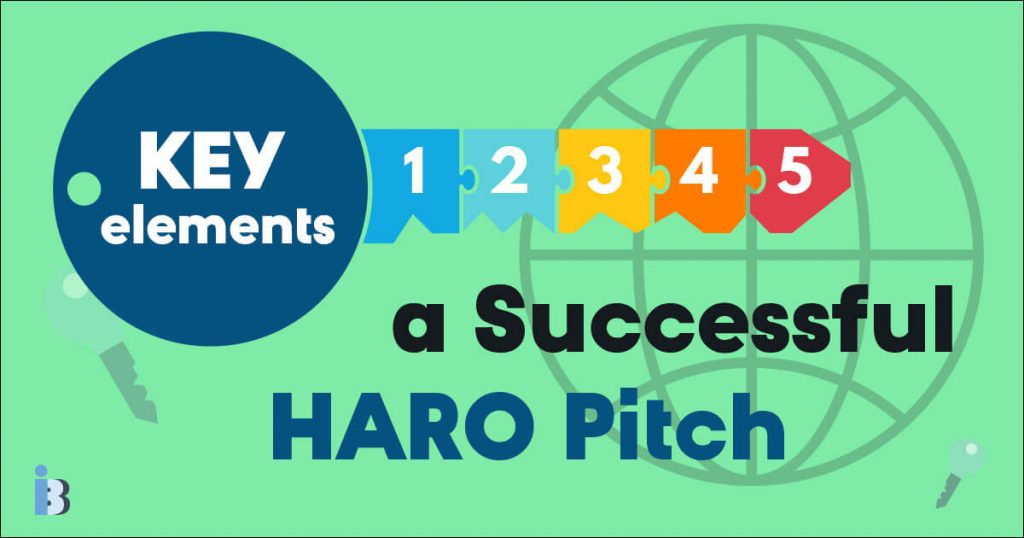
How do you catch the eye of a busy reporter who receives hundreds of pitches every day?
You need to master the art of writing pitches. Here are the steps to follow:
1. Research relevant journalists and media opportunities
Ideally, you’d research the journalist before you send a pitch. Check their previous content, style, niche, and audience. If the media outlet is mentioned in the query, read a few articles to see what they publish. Then, read the HARO request carefully to understand the request better. Additional requirements (if provided) are also important to match your answer. After such thorough research, you’re ready to tailor your pitch to the reporter’s specific needs.
Furthermore, in the paid Connectively accounts for sources, you can set up email alerts. Thus, you can get notified only about queries related to your industry. In addition, there are HARO alternatives, such as MentionMate, Featured, etc., where you can research more media opportunities.
2. Craft a compelling subject line
The subject line is the first element a journalist sees before opening your email. That’s also your first chance to make an impression and show expertise. So make it catchy, succinct, relevant, and click-worthy. Avoid generic or vague subjects that do not convey your value proposition or expertise. Instead, use keywords from the query, numbers, or questions that spark curiosity and show you’re a great fit for the story.
3. Write a clear and concise pitch introduction
The introduction of your pitch must be short and clear. First, introduce yourself with your credentials and relevance to the query. Explain why you’re the perfect match for the story and what you can offer the audience. Stay away from fluff, slang, or irrelevant information. Instead, highlight your unique angle that contributes to a compelling story.
4. Provide relevant expertise and value
The main body of your pitch must provide relevant experience and expertise. Answer all the questions in the query for a higher chance of getting picked. Provide examples or solid data to back up your claims. Additional insights or tips to enhance the story are welcome as well. Include links to your site, social media profiles, or previous media appearances that showcase your authority. Avoid self-promotion, sales pitches, or generic advice that does not address the query.
5. Effective HARO pitch format and structure
The format and structure of your pitch must be clear and easy to read. Subheadings, bullet points, bolding, or italic are recommended to highlight key points and organize your information. That’s how you help reporters see the most important parts of your pitch.
Stick to short paragraphs and sentences to keep your pitch short and scannable. Typing and grammatical errors make your pitch look unprofessional, so avoid those as well.
7 Best Practices for Creating High-Quality HARO Pitches

High-quality pitches are the path to success with Connectively.
However, you must follow the best practices for creating effective pitches to get results.
1. Answer questions relevant to your industry and knowledge
Focus on the HARO questions that match your expertise. Thus, you provide valuable insights that journalists can use in their articles. With the necessary knowledge, you respond to queries with confidence and provide valuable information. This approach not only increases your chances of being featured but also enhances your reputation as a go-to expert in your field.
Journalists can easily spot plagiarized and low-quality content. So use your own voice and style, show some personality and enthusiasm, and make your response memorable.
2. Tailor pitches to match journalists’ needs
Generic pitches that don’t address the specific question are not likely to get media attention. Copy-pasted and AI-generated ones are easily caught, so don’t do that as well.
Read the query carefully to understand what the reporter wants to know, what kind of sources they are looking for, and what structure they prefer. Make sure to highlight why you are an expert on the topic to make the reporter read your answer. Then, write your pitch accordingly and make sure it answers the question.
It’s also important to be timely in your response, as journalists are often flooded with HARO emails. Each request has a deadline, so responding quickly increases your chances of being chosen as a source.
3. Have a unique idea
The perfect HARO pitch contains a unique idea that adds value to the story. Journalists are looking for fresh and original perspectives that will make their articles stand out. If you provide information that’s already widely known or covered on the internet, you’ll most likely get ignored. Instead, think of a unique angle, insight, or experience that relates to the topic and demonstrates your expertise.
For example, you could share a personal story of how you overcame a challenge, a case study of how you helped a client achieve a specific result, or a statistic that reveals a surprising trend or finding in your industry. A unique idea will spark the reporter’s curiosity and make them want to interview you for their story.
4. Showcase credibility and expertise
Journalists want to quote trustworthy and knowledgeable sources. So you need to convince them that you’re exactly what they’re looking for. This is your time to shine without looking pushy. Therefore, demonstrate your qualifications by including credentials, achievements, awards, publications, media appearances, testimonials, or social proof.
Also, provide other contact information, such as a link to your website and social media handles where the reporter can see your portfolio, blog, podcast, videos, or other content that showcases your expertise.
5. Personalize pitches to stand out
Personalizing your HARO pitch for the journalist and their audience is another way to make it more effective. Address the reporter by name, mention their previous publications, and show that you have done research on them. Compliment them on their work to show that you care and are familiar with their articles.
Be respectful and professional in your communication with the journalist. Thank them for the opportunity and offer to give any additional information they may need. Building a positive relationship with reporters can draw future opportunities for media coverage.
6. Follow Connectively’s guidelines and etiquette
Following Connectively’s guidelines and etiquette improves your chances of success. Avoid pitching for queries that are not relevant to your industry or expertise. Don’t include attachments or images in your pitches unless they’re requested. Follow up with journalists only if they reply to you first. Thank them for the opportunity to be featured in their story.
You can miss the mark with pitches that are:
- off-topic
- promotional
- vague
- too lengthy
- too short
Some pitches may require answering multiple questions in a single query. You can make those longer (over 200–300 words), but always read the journalist’s request and requirements before replying. They may have specified exactly what they expect from you.
Furthermore, the reporter may reach out for a follow-up interview or quote if your pitch is interesting enough. That’s a good sign—you’re a step closer to getting media coverage.
7. Have a helping mindset
Pitch to journalists with the intention of helping them write better stories, not just getting exposure for yourself. Provide value to their audience by answering their question in a clear, relevant, respectful, and useful way. Think of ways you can solve a problem by answering the question.
Pitching with the sole intention of publicity and backlinks can hinder your inspiration. Alternatively, writing a HARO pitch with a helping mindset will make it more authentic, engaging, and persuasive. So relax your mind to produce the most helpful answer possible.
How to Write a HARO Pitch That Works: Optimize Your Response for Success
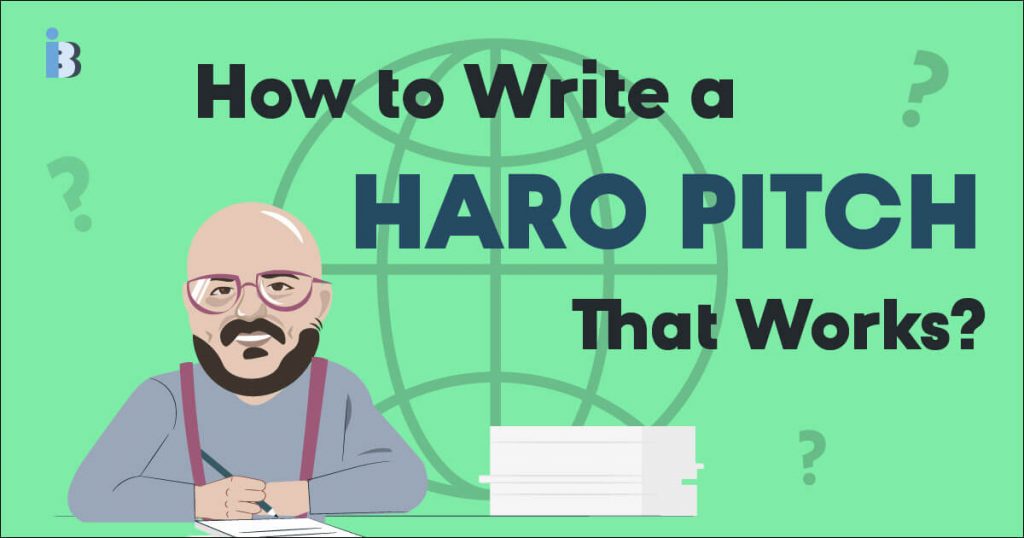
Connectively is the perfect platform for press coverage, but it’s also quite competitive. You must optimize your responses as much as possible to increase your chances of getting picked.
Here are 4 tips for writing and optimizing your pitches for success:
1. Incorporate targeted keywords and phrases
One of the first things journalists look for in a pitch is relevance. To stand out from the hundreds of pitches they receive, you must incorporate targeted keywords and phrases that match their query and headline.
Keywords and keyphrases are words or expressions relevant to your topic, industry, or niche. They help recipients find your pitch easily and understand what it’s about. The use of keywords also contributes to a higher ranking on search engines.
Strategically and sparingly placed keyphrases highlight the pitch value. Use relevant keywords in your subject line, introduction, and the actual HARO response. These are the most important parts of your pitch, as they determine whether journalists will open and further read your email.
For example, if the query is about “advice for remote workplaces,” use terms like “remote work,” “productivity,” “communication,” “collaboration,” etc.
2. Ensure correct grammar and spelling
Grammar and spelling are factors that affect your pitch’s credibility. If your answers to the questions are full of errors, it makes you look unprofessional and reduces your chances of getting a positive result. Therefore, proofread your pitch carefully to correct typos or grammatical errors before you hit send.
Here’s what else you can do to ensure correct spelling and grammar:
- Use tools like Grammarly or Hemingway to improve clarity and readability. They are among the best grammar checkers, which also identify spelling mistakes and weirdly structured sentences.
- Read your answer aloud to see if it sounds natural and clear. If you stumble over any words or phrases, rewrite them to make them simpler and smoother.
- Ask someone else to review your response. A fresh pair of eyes can spot any mistakes or inconsistencies you may have missed.
3. Make pitches concise
Journalists have to sift through hundreds of responses daily. They just don’t have time to read long emails that don’t get to the point. Therefore, your pitches must be short and clear. Despite Connectively’s new 6,000-character limit, you should keep your message to no more than 200 words or three paragraphs:
- First paragraph: Introduce yourself and explain why you are a qualified source for their story.
- Second paragraph: Provide your main answer or insight to their query, with relevant facts or examples.
- Third paragraph: Include a call to action, such as asking them to reply if they are interested or offering to send more information.
Use bulleted lists, subheadings, and bolding to make your text easy to scan and digest.
4. Include relevant supporting materials (if applicable)
Providing substantial proof of your expertise is helpful to establish yourself as a trusted industry voice and secure press coverage opportunities. Compiling supporting materials, such as a portfolio or case study, can give you plus points. Complement this with tangible data, such as statistics, that back up your claims and show you are a trustworthy source for the story. Links to your social media accounts, website, or blog are also welcome.
Remember that additional materials must add value to your pitch. Avoid spamming the journalist with unrelated links and attachments that distract them from the main message.
Track and Evaluate HARO Pitch Performance: Key Metrics, Benefits, and Methods

Not every HARO response results in a successful placement. That’s why it’s important to track and evaluate your HARO pitch performance over time. Evaluating your HARO performance means analyzing the data and identifying what can be improved.
4 key metrics to track when evaluating pitch performance:
- Number of pitches sent
- Number of follow-up emails received
- The placements (mentions or links) you secure
- The outcomes placements generate (traffic, rankings, conversions)
5 benefits of HARO pitch performance tracking:
- Measure return on investment (ROI) and see if it’s worth your time and resources.
- Improve your pitching skills and learn how to write more effective pitches for different media outlets and topics.
- Optimize your pitch strategy and focus on the optimal opportunities for your brand and goals.
- Build stronger relationships with journalists and become a trusted source for future stories.
4 methods for monitoring pitch performance:
- Create a spreadsheet to record the details of each pitch, such as the date, topic, outlet, reporter, response status, placement status, backlink, traffic, leads, etc.
- Add UTM tracking (codes added at the end of a URL to monitor performance) to your HARO link to track how many clicks, visits, and conversions your pitch generates.
- Use media monitoring tools like Google Alerts to track when and where your pitch gets published and the social feedback it gets.
- Send a short survey or feedback form to the reporters who responded to your pitch to ask about their satisfaction.
By tracking and evaluating HARO pitch performance regularly, you gain valuable insights into your PR efforts and improve them over time. You can also celebrate your wins and showcase your achievements to your team, clients, or other stakeholders.
Case Studies and Success Stories By InBound Blogging
We are thrilled to share with you our amazing HARO success stories! InBound Blogging has been using HARO to pitch expertise and insights to top media outlets, and we have landed incredible placements that boosted our clients’ brand awareness, credibility, and traffic.
But before we jump to that, we want to introduce ourselves properly:
Overview of InBound Blogging: Who we are and what we do
InBound Blogging is an SEO agency providing HARO services. We deliver high-quality responses that engage journalists’ attention. We use a proven methodology that combines targeted keywords, content optimization, and outreach to get your quote featured on authoritative sites and media publications.
InBound Blogging’s goal is to establish you as a thought leader, gain exposure by building backlinks and mentions, and generate more organic traffic to your site. All these efforts result in earning authority for you as a subject matter expert in the public eye and for your website in search engines.
Real-life examples of successful HARO pitches
Below, you’ll find examples of a journalist’s request, subject line, introduction, actual response, and conclusion. They will teach you how to submit a HARO pitch properly. We also showcase some of our winning HARO responses.
Example of a Connectively query
The following query was posted by a journalist from Forbes who was looking for experts on how to improve customer retention:
I’m looking for experts who can share tips on how to improve customer retention for online businesses. What are some strategies or best practices that can help online businesses retain their customers and increase their loyalty? Please provide specific examples or case studies if possible. Also, please include your name, title, company name, headshot, and website URL.
Example of a subject line
The subject is arguably the most crucial element of the entire pitch. These 20+ characters have to hint you’re the expert on this topic. Use the suggestions below as a HARO pitch template for your own opening line; just change the topic and title.
Here are 5 possible subject lines you can use for the above customer retention request:
- [Company] Owner with Top Tips on Customer Retention
- 10-Year Online Business Owner on Improving Customer Retention
- CEO of [Company] with Advice on Retaining Customers
- Online Marketing Expert Tips on How to Retain Customers
- Brand Manager on Strategies to Improve Customer Retention & Loyalty
Example of an introduction paragraph
Here is a sample introduction paragraph of a HARO email:
Hi there (use the reporter’s name if provided instead of “there”),
I’m [expert’s name], the founder and CEO of [Company], a company that provides online marketing solutions for small businesses. I have over 10 years of experience in online marketing and customer retention, and I have helped hundreds of clients grow their businesses online.
Example of the actual response + conclusion
Let’s continue with the customer retention topic and an example of a HARO pitch. Bolding and bullet points help with the structure to make the pitch easier to read.
Here are my top 5 tips on how to improve customer retention for online businesses:
- Segment your customers based on their behavior, preferences, and needs. This allows you to tailor your communication and offers to each segment and increase their engagement and satisfaction.
- A loyalty program rewards your customers for their repeat purchases, referrals, reviews, and feedback. It encourages them to stay with you longer and become your advocates.
- Provide excellent customer service and support. Make your customers feel valued and appreciated, and, thus, reduce the chances of them leaving you for a competitor.
- Ask for feedback and testimonials from your customers regularly. It helps you understand their pain points and expectations, and improve your products or services accordingly. It also shows them that you care about their opinions and experiences.
- Showcase your social proof and credibility. This way, you build trust and authority with your potential and existing customers, and persuade them to choose you over other options.
Thank you for your time and consideration. Feel free to contact me with additional questions.
Kind regards,
[expert’s name]
Now, let’s look at the results we achieved via Connectively (previously HARO):
Examples of InBound Blogging’s winning pitches
InBound Blogging has a proven track record of delivering results. We’ve helped businesses and entrepreneurs grow their online presence, and we want to share some of our successful pitches.
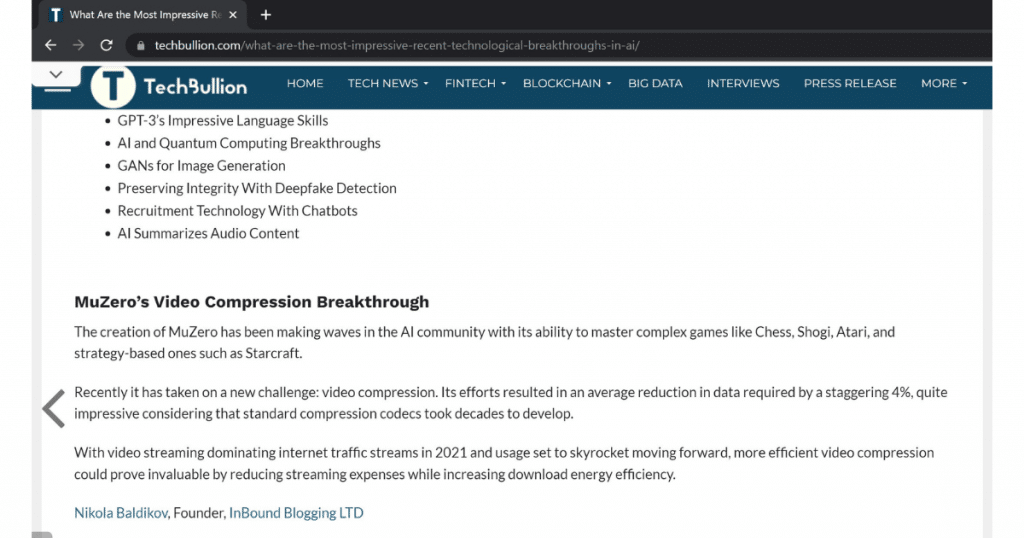

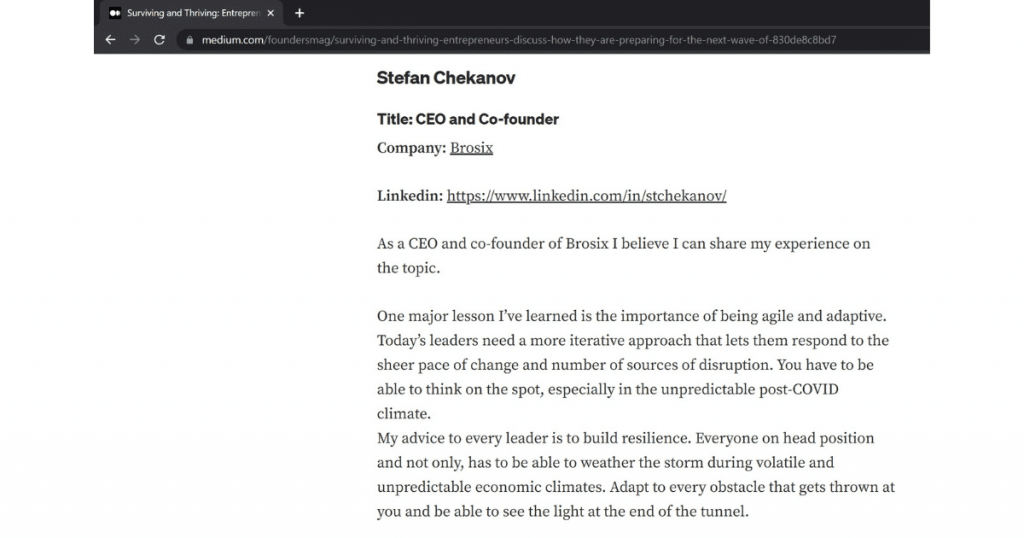
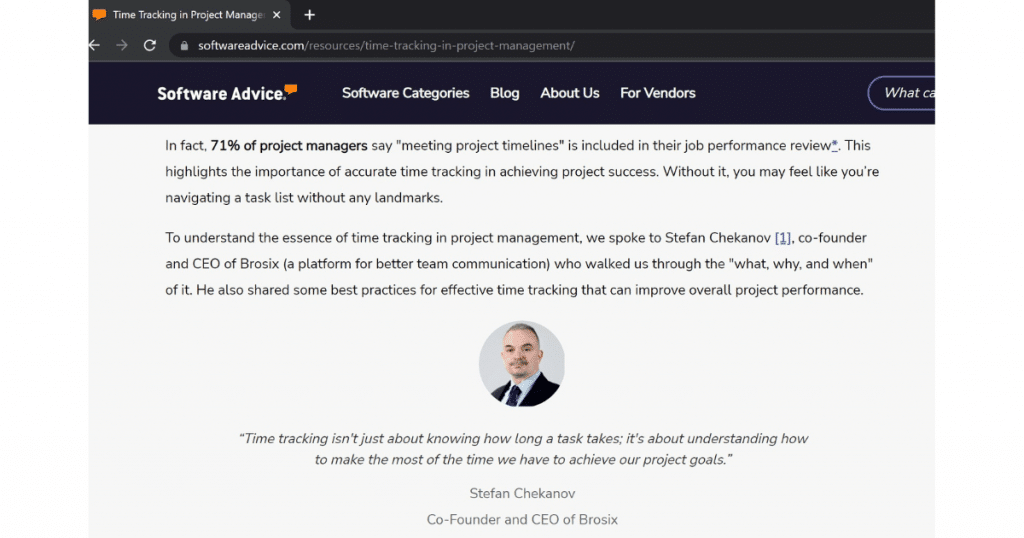
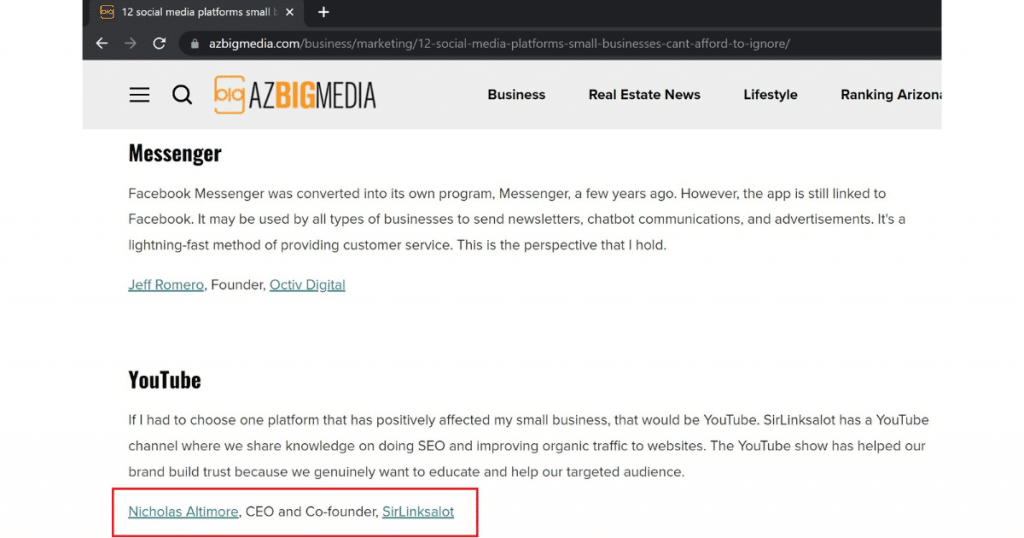
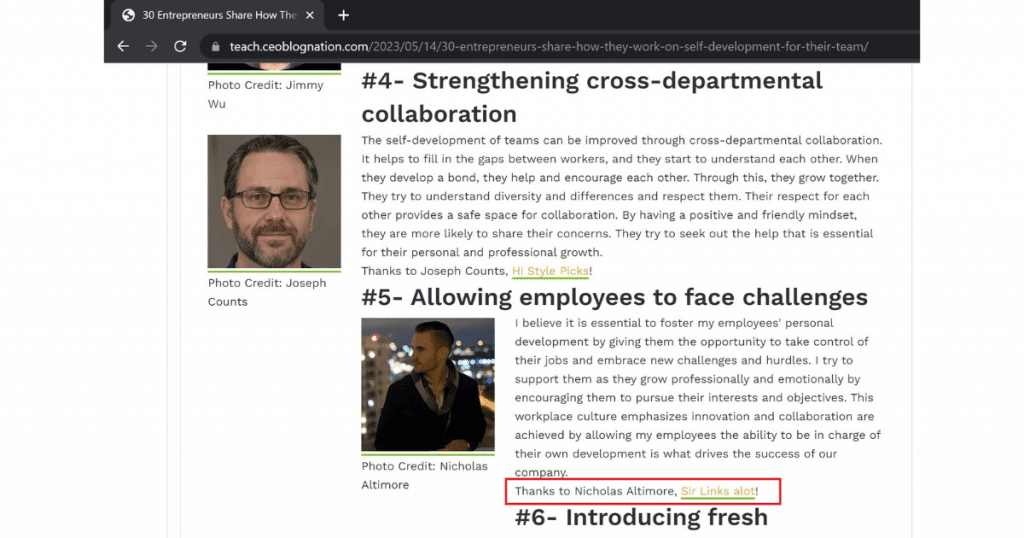
Lessons Learned and Strategies Employed By Professionals
Let’s take a look at expert opinions about leveraging Connectively as a source of authoritative backlinks.
Remember, consistency and quality matter
“One effective strategy for obtaining high-quality backlinks is to be consistent in providing valuable insights. Connectively is a platform that thrives on expert knowledge. By regularly contributing high-quality, relevant answers, you establish yourself as a trusted expert. As your credibility grows, more people and brands will want to reference your insights, leading to more backlinks.” — Jaya Iyer, Marketing Assistant, Teranga Digital Marketing
Share Personal Experiences and Insights
“When a journalist was seeking input on the future of artificial intelligence, I shared how my company developed and implemented an innovative AI-powered solution that significantly improved operational efficiency for our clients. By highlighting this specific example and showcasing the tangible benefits our technology brought to the market, I was able to capture the journalist’s attention and establish our expertise in the field.” — Luciano Colos, Founder and CEO, PitchGrade
Leverage an Agency for SEO Content
“You could not achieve the intended results even after adhering to all HARO writing recommendations. Due to the SEO agency’s ability to develop a unique online presence through content creation, you can count on getting high-quality links. Using their set of professionally qualified writers, an agency will deliver content that gives your business digital visibility.” — Marc Hardgrove, CEO, TheHOTH
Provide Unique, Anecdotal Answers
“What seems to work best is offering something unique and rooted in experience. An answer that is genuinely helpful and can be backed up by an example from personal experience will stand out and give the publication very little reason not to select you.
On a couple of occasions, I’ve had a straightforward answer selected, but the risk is that there will probably be somebody else saying the same thing. On the other hand, I’ve tried thinking outside the box with answers (and even answering questions on topics I’m unfamiliar with), but generally, this can be a real time-drainer with little reward.
Stick to questions where you can offer genuine value with your answers, and always aim to provide an anecdotal contribution.” — Joe Cowman, Head of SEO, FATJOE
Match Answers to Field Experience
“The best tip I can give is to highlight your personal experiences. You don’t want to sound like you researched or looked up answers online because reporters seeking answers can do that as well. Instead, share your knowledge and experience to add value to their upcoming piece. Additionally, ensure you have experience in the field so you are perceived as a more reliable source of information.” — Tristan Harris, Demand Generation Senior Marketing Manager, Thrive Digital Marketing Agency
Stand Out from the Crowd
“Most responders follow a similar pattern for writing pitches. They perform a Google search and pitch the content already available on the internet. That results in copious pitches with the same angles. To get pitching success, you need to avoid this. Before writing any pitch, perform solid internet research to find out all the available points on the internet that you should avoid. This will help you stand out from the rest of the pitches and increase the chances of selection.” — Shivbhadrasinh Gohil, Chief Marketing Officer & Co-founder, Meetanshi
Collaborate with Industry Experts
“One highly effective strategy for obtaining high-quality backlinks through HARO is to embrace collaborative content creation. By collaborating with other industry experts or thought leaders, you can create engaging and insightful content that attracts attention and generates backlinks. Collaborative content benefits from the expertise and diverse perspectives of multiple contributors, and they, too, can share and promote the content, increasing its reach and the likelihood of gaining quality backlinks from reputable sources.” — Matias Rodsevich, CEO, PRLab
Conduct Domain Authority Checks
“When it comes to securing high-quality backlinks through HARO, I’d always recommend you conduct a domain authority check before responding. To maximize the benefits, focus on requests from domains with a higher authority than your own. This ensures not only link acquisition but also boosts your website’s visibility and credibility. Quality trumps quantity in backlinks. By being selective and targeting higher authority domains, you’ll optimize your link-building efforts.” — Angie Makljenovic, Blogger & Content Creator, She Can Blog
Why Choose InBound Blogging’s HARO Service?
InBound Blogging is interested in growing your online presence. Our services are focused specifically on earning the most valuable backlinks for your business. We pitch only to authoritative publications that will link back to your website. Our stellar team of link building experts identifies the best HARO opportunities for your niche. Then, our skilled content marketers and professional writers take over and craft the best pitch for HARO—smart and well-researched.
Benefits of using InBound Blogging’s HARO services:
- Save time: You don’t have to spend hours monitoring HARO platforms, researching, writing, editing, and submitting pitches. InBound Blogging will do all the work for you at an affordable price.
- Access to a team of experts: You don’t have to worry about finding or hiring writers, editors, SEOs, or outreach specialists. InBound Blogging has a team of specialists who have the skills, experience, and tools to respond on your behalf.
- Achieve your goals faster: You don’t have to wait for months and months to see results from your pitches. InBound Blogging generates and submits your pitches while you reap the benefits.
If you want to take your pitch to the next level, InBound Blogging is the right HARO service for you. Let’s start crafting amazing pitches. Contact us today!
Conclusion
HARO pitches are a powerful way to get media coverage for your business, brand, or product. You can also showcase your expertise as an industry leader by responding to relevant queries from journalists and bloggers. HARO platforms help you build relationships with influential media outlets and increase your online visibility.
However, HARO responses are not easy to write. They need time and attention. Following the best practices is a great starting point. Not every pitch will be a success, though, due to the high competition. Practicing pitching perfects the process. Just keep going, and you’ll definitely see results.
In the realm of HARO, the power to seize media opportunities and shape your brand’s narrative lies in your hands, so make the choice that propels your success forward.



